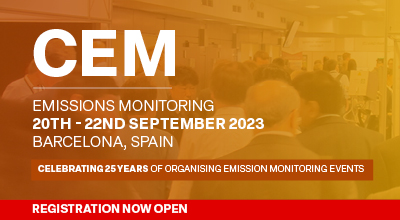| Abstract Title: | Experience with the application of EN ISO 16911 for stack flow measurements and the guidance document EN TR 17078:2017 |
| Presenter Name: | Mr Chris Dimopoulos |
| Company/Organisation: | National Physical Laboratory |
| Country: | United Kingdom |
Abstract Information :
Volumetric flow rate in industrial ducts and stacks is combined with pollutant or greenhouse gas concentrations to deduce mass emissions. These are then used to populate emission inventories and are traded under emissions trading schemes. Manual and automatic methods for the determination of flow are described in EN ISO 16911:2013. This Standard introduced a series of improvements on previous flow standards that when combined provide critical uncertainty gains that support compliance with the EU’s Emissions Trading System (EU ETS).
Part 1 of the Standard specifies a range of available reference techniques and introduces a number of performance characteristic and requirements. Testing laboratories have now had extensive experience in the application of EN ISO 16911-1. One of the key issues identified is that, although the performance requirements given in the Standard are critical for the compliance to the highest tier of the EU ETS they have also been criticised for being at times difficult to interpret and achieve. More specifically, they are often not necessary for lower uncertainty requirement measurement objectives such as mass emission reporting (non-EU ETS) and isokinetic sampling. This is indeed an issue throughout EN ISO 16911-1 as a large proportion of the quality control specified within the standard seems to have been based on the demands of the EU ETS without taking into account that in some cases the degree of quality control may unnecessarily increase the time and cost of a measurement campaign for less demanding measurement objectives. EN TR 17078:2017 was produced to address these issues and clarify elements of EN 16911-1 and how certain requirements specified within it should be interpreted. It makes recommendations regarding which requirements and performance characteristics apply to specified measurement objective(s) in order to achieve a consistent application of the Standard.
More recently there has also been more experience in the application of Part 2 of the Standard, which specifies the quality control required for automated flow measurements systems. This has highlighted the need for more clarity on some elements of EN ISO 16911-2.
This talk will review the requirements of EN ISO 16911, and the concerns identified through the in-field application of the Standard. EN TR 17078:2017 guidance will be summarised, and an update on the next steps in Standardisation activities that aim to address the issues in both parts of EN ISO 16911 will be presented.

